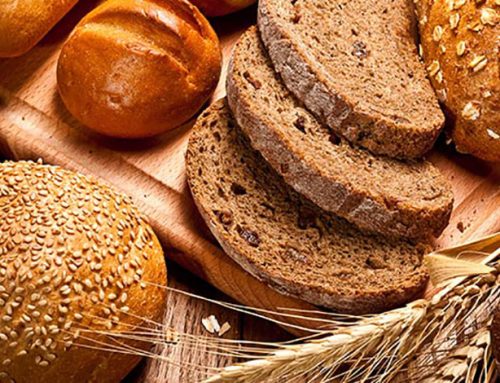Food tracking usually results in an unhealthy focus on calories in, calories out. When I look at my clients’ food diaries, I’m a lot more interested in the quality of their food selections than the overall caloric intake.
Logging your calories and macros is a great way to stay on top of what you’re eating, and it’s one of the best ways to lose weight. But there’s actually a lot more you can learn about your eating habits through tracking, especially if you switch up what you’re tracking.
Here, dietitians share some of their favorite food tracking strategies to help you make key observations about your diet so you can improve the way you eat.
Food Tracking Strategies
Here are some different tracking strategies to try. Experiment and see what works best for you.
TRACK FIBER INTAKE
“Being on top of your daily fiber goal is a great way to improve the overall quality of your diet,” says Stephanie Hnatiuk, a registered dietitian. Fiber is found in tons of nutrient-rich foods like fruits, vegetables, nuts, seeds, whole grains, beans and lentils. Hnatiuk recommends setting a fiber goal of at least 25 grams a day for women and 38 grams a day for men, which can encourage you to choose fiber-rich foods at each of your meals and snacks.
KEEP TABS ON HUNGER AND FULLNESS
Tracking your hunger and fullness before and after you eat can be revealing. Simply keep track of this in the notes section of your food logging diary. “You may eat less naturally by learning to eat when you’re hungry, rather than waiting hours to eat until you’re overly hungry and then overeating,” explains Sarah Schlichter, a registered dietitian.
And heads up: Signs of hunger can be more subtle than just a growling stomach. “Some other signs may be headaches, loss of concentration, fatigue, and thinking about food. I generally encourage people to track these to see any trends to learn their body’s signals of hunger,” Schlichter says. It’s also super important to practice eating to a comfortable level of fullness, she adds.
COUNT YOUR COLORS
“A unique take on tracking is to pay attention to how many colors you’re eating throughout the day, specifically when it comes to fruits and vegetables,” says Mackenzie Burgess, a registered dietitian. “The colors are commonly broken up into five different categories: red, yellow and orange, green, purple and blue, and white. Track how many colors you eat in a day, with the goal of eating as many as possible. All of these different colors represent different antioxidants and health-promoting nutrients such as potassium, fiber, folate, vitamin A and vitamin C.”
You might be surprised how many colors you’re missing. And if that’s the case, Burgess recommends starting with simple additions to pump up your fruit and vegetable intake. “Try topping yogurt with various berries, stirring colorful bell peppers into pasta dishes, or making a rainbow quinoa salad for a healthy side dish.”
NOTE MEAL FREQUENCY
Skipping meals can be a big problem, causing people to fall short on their nutrition goals. “It can make it hard to get enough key nutrients like fiber, protein or essential vitamins and minerals,” Hnatiuk notes. “Skipping meals early in the day can also lead to food cravings and binge eating — especially in the evenings.” That’s why she suggests keeping an eye on how often you’re eating. Ensure you’re making time for at least three meals a day to help improve energy levels, maintain balanced blood sugar levels, and boost the quality of your workouts.
MEASURE YOUR WATER INTAKE
It’s hard to know how much water to drink, and Schlichter encourages people to track their water intake since most people are dehydrated, especially in the winter. “There are now water bottles that make this easier, but a good rule of thumb is to aim for half your body weight in ounces,” she says. “The active population will need to add more to this, but remember that fruits, veggies and other products that have a high water content also contribute to water intake.” To log your water in MyFitnessPal, scroll to the section of your diary labeled “water.”
TRACK YOUR SNACKS
Sometimes, food eaten outside of meals can slip through the cracks, even if you’re logging the rest of what you eat. “We often unconsciously eat more snacks than we really think we do,” explains Kimberly Marsh, a registered dietitian. In addition to ensuring you track all your snacks, Marsh recommends considering why you ate the snack and making note of it. “Understanding our ‘extra’ calories can help us get real control on our overall intakes.”
WRITE OUT YOUR WINS
Tracking isn’t just about numbers. It’s also about noticing the less tangible successes you have day-to-day. “Record all the things you did well,” suggests Jill Weisenberger, a registered dietitian and author of Prediabetes: A Complete Guide. “For example, record when you chose healthful food over the vending machine at work, or when you chose not to eat the cookies in the break room. This is a great way to see your small wins, boost confidence and start making even greater wins by seeing yourself as someone who is successful at healthful eating.” Building faith in your habits and judgment can be a game-changer.
JOT DOWN YOUR FOOD FEELINGS
Another great way to use the notes section of your diary is to track the feelings you have about what you’re eating, Marsh says. Consider keeping a record of why you’re eating, what emotions are involved, and anything else you feel during or after the meal. “Understanding the how and why we eat is incredibly important before trying to change our actual eating,” Marsh adds.
Click here to learn more about food tracking strategies.







